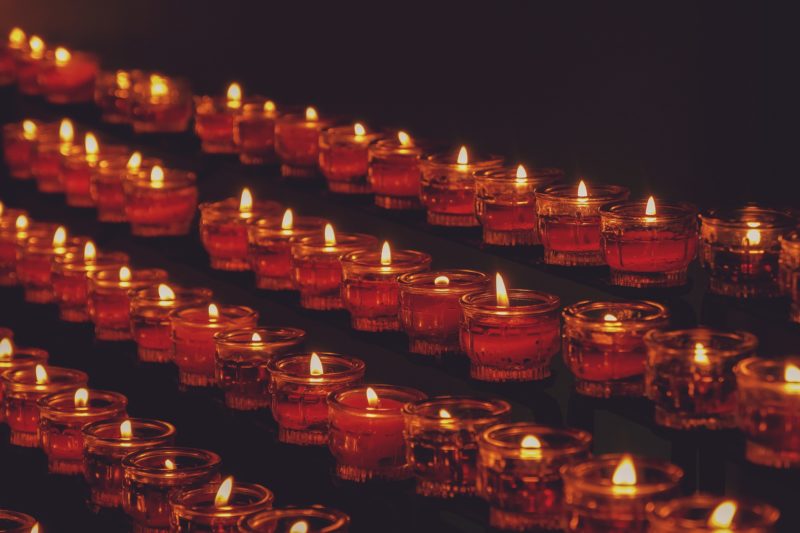Did you know that people made a device for them to easily make candles? During medieval times, candles were of much use which is why they made innovations. So, what is a candle maker called?
Do you know that being a “chandler” is a necessary profession? For most of history, it was! Everyone relied on candles. The people who created them continue living life after dark.

From the most basic of rural huts to the grandest of grandiose fortifications. For hundreds of years, the task was practically indistinguishable from the procedure of making our premium scented candles today! So, let us go through these terminologies; what is a candle maker called?
What is a Candle Maker Called?
A chandlery was originally the office in a wealthy medieval family in charge of wax and candles. It is also evident in areas where the candles were stored. It could be led by a chandler.
The office was subservient to the kitchen, and only bigger houses had a separate office. Whether it was a separate office or not, the role was significant in a time before electric light. When candle manufacture was typically done privately.
It was near other household offices, such as the ewery and the scullery. While this usage is no longer in use, the name can still apply to a candle company. The modern definition of a chandler is a person who sells candles.
By the 18th century, the majority of professional chandlers sold candles, oils, soap, and even paint. Because these served as ship’s stores, the term chandlery evolved to apply to a shop selling nautical things for ships and boats. However, for a while, they were referred to as ship chandleries to differentiate them.
The name chandlery was adopted by Americans for these ship chandleries. But they preferred the phrase chandler’s store. Both names are still used today.
A chandler is someone who works in the chandlery industry or runs a chandler’s store. The term chandelier, which originally referred to a ceiling fixture that housed several candles, is still in use. Chandeliers, on the other hand, are mainly dependent on electrical illumination nowadays.
History of Chandler
The answer to what is a candle maker called runs back to candlemaking history. As previously said, chandlery was not always as pleasurable or gratifying as many of its practitioners find it now. Tallow fat was used to make candles for the majority of human history. To put it another way, meat waste!
This meant that ancient chandlers would normally need a strong stomach to deal with everything that was involved. Thankfully, circumstances have improved a lot since then! Most chandleries would be located near tanneries and abattoirs for convenient access to tallow fat.
As a result, the majority of the higher classes considered this line of labor repugnant. Chandlery was seen as a highly low-class occupation. As you can expect, the meaning of handcrafted scented candles in the past was not the same as it is today!
Because it was essentially lard, candles gave out a particularly foul odor. It is a far cry from the lovely fragrances of our handcrafted candles. Chandleries in Scotland had it a little easier, manufacturing candles out of fir trees.
Beeswax candles, on the other hand, burnt purely and cleanly, with none of the unpleasant odor. However, it needed a staggering quantity of beeswax to manufacture a single 4″ candle, making it prohibitively expensive. As a result of this, as well as its symbolic value, it was usually used in churches.
Fortunately, the use of tallow began to wane around the end of the 17th century. A few alternative materials, such as whale blubber, were discovered. Then, in the late 1800s, gas illumination appeared, only to be supplanted by electricity a few decades later.
As a result, most commercial chandlers were effectively rendered obsolete, forcing them to seek employment in other industries. There are several connotations for the phrase nowadays. Aside from candle producers like us, chandlery refers to portside groceries for sailors.
They’ve been there for millennia for much of history, chandlers provided seafarers with candles for their ongoing travels. Naturally, these chandlers expanded into additional sailing products and supplies. For the boating and nautical community, a chandler is a today a one-stop-shop for everything they may want at sea.
There were more innovations with the expansion of the whaling business in the 18th century. Spermaceti, an oil derived from a hollow in the sperm whale’s head, became a popular ingredient for candle manufacture. The spermaceti was created by crystallizing sperm whale oil and was the first candle material to become widely available.
When burnt, spermaceti wax, like beeswax, did not have a disagreeable odor and created substantially brighter light. It was also tougher than tallow or beeswax, so it didn’t melt or bend under the hot summer sun. Spermaceti wax was used to make the first “standard candles.”
Despite breakthroughs in candle making, the candle business dropped significantly with the advent of improved lighting technologies. These are kerosene and lamps, and the discovery of the incandescent light bulb in 1879. In the 2000s with fake candles and lanterns utilizing LEDs.
Candles were offered as a decorative object from this time forward. Candles, on the other hand, maintain their symbolic importance, for example, as votive offerings. Candles became accessible in a wide range of sizes, shapes, and colors, and consumer interest in scented candles grew.
Conclusion on What is a Candle Maker Called
Due to the extremely strong demand for candles in the 1990s, new types of candle waxes were produced. Despite the advances made, candle makers were still widely used. Without it, people would have a hard time making innovations in candle making.
